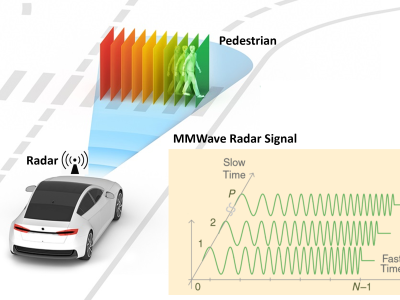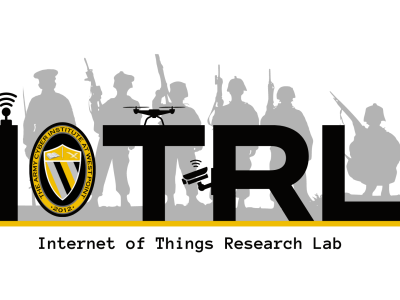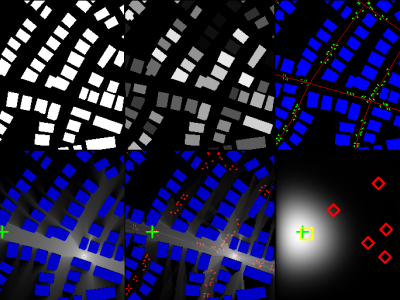CRAWDAD columbia/ecsma

- Citation Author(s):
-
Shane B. Eisenman (Columbia University)
- Submitted by:
- CRAWDAD Team
- Last updated:
- DOI:
- 10.15783/C7CC7H
- Data Format:
 135 views
135 views
- Categories:
Abstract
Sensor network dataset for enhancing CSMA MAC protocol.
This dataset contains packet transmission traces collected from an experimental wireless sensor network testbed, where E(Enhanced)-CSMA MAC protocol is implemented using TinyOS on Mica2 motes.
date/time of measurement start: 2006-03-26
date/time of measurement end: 2006-04-08
collection environment: E (Enhanced) -CSMA is a fully distributed MAC framework targeted at increasing the chance of successful packet reception in wireless sensor networks using carrier sensing. To show the performance enhancement, the authors conducted packet transmission experiments on a 31 node sensor network testbed based on TinyOS running on Mica2 motes.
network configuration: The testbed comprises 31 Mica2 motes arranged in a roughly rectangular grid. The motes are connected to MIB600 Ethernet interface boards which are mounted across a suspended ceiling hanging about 4ft from the concrete structural ceiling (nodes 1-6 are instead mounted on the dry wall) of a roughly 1600ft2 room of our research center. The motes hang approximately 10ft above a metal tile raised floor. A line of heavy-duty rigging for electrical conduits and throw switches hangs approximately 2ft from the suspended ceiling between nodes 28-31 and the rest, offering substantial reflective surface area. The Mica2s are powered from the MIB600s, which in turn are powered by a 802.3af Power over Ethernet hub via standard CAT5E cables. The Ethernet back channel is used for mote programming, experimental parameter configuration and data collection, and as the feedback channel for the ideal feedback scheme described in the paper. Motes use a frequency of 914.077MHz and are equipped with standard quarter wave whip antennas.
data collection methodology: The Ethernet back channel is used for mote programming, experimental parameter configuration and data collection. The motes are configured by prior to each experimental run via the ethernet back channel by shell script wrappers around applications running on a central server. These applications send experiment control/config messages that are handled by message handlers implemented in TinyOS on the motes. Data is gathered on the motes (stored in RAM) and then offloaded via the same backchannel in response to a query after the experimental run.
Tracesets
columbia/ecsma/feedback
Traceset of packet transmissions with different feedback mechanisms of E(Enhanced)-CSMA protocol.
- description: This traceset contains the packet transmission data collected from the experiments of applying three feedback mechanisms - ideal, positive and periodic, to demonstrate the potential and feasibility of E-CSMA.
- measurement purpose: MAC Protocol Development
- methodology: With respect to a given transmitter, the state of the wireless channel at each potential receiver in its radio range is unique. Therefore, the authors propose to measure the existing correlation empirically by employing in-band feedback mechanisms to create a probability distribution of successful reception. The authors further propose that a transmitter maintains such a distribution for each of its potential receivers (i.e., one hop neighbors). This traceset contains the packet transmission data collected from the experiments applied by three feedback mechanisms - ideal, positive and periodic, to demonstrate the potential and feasibility of E-CSMA. For this traceset, the authors use 'Outlier Magnitude' as the input value set, and use 'per-neighbor' probability distributions for maintaining channel status.
columbia/ecsma/feedback Traces
- columbia/ecsma/feedback/ideal: Trace of packet transmissions with different ideal feedback mechanism of E(Enhanced)-CSMA MAC protocol.
- file:feedback-ideal.tar.gz
- configuration: With Ideal feedback, a receiver sends back an acknowledgment for each packet received. Per receiver, per bin (i.e., bins for RSS value), the transmitter keeps a FIFO queue of the M most recent feedback results, where a result is 1 if an acknowledgment is received for a given packet and 0 otherwise. The instantaneous estimate of the success probability to a given receiver with channel conditions mapping to a given bin is calculated as a function (e.g., average) of these M most recent feedback results, where clearly M controls the granularity of the stored probability. Ideal feedback is sent out-of-band over an Ethernet back channel (for experimental comparison only). This trace contains the results of experiments with different source rates (0.25, 0.5, 1, 2, 3, 4, 5, packets/sec). Each experiment consists of five trials where (regardless of source rate) 200 packets are transmitted by each of the 31 transmitters. Actual packet transmissions at rate r_src = 1/t_src are randomized within the interval t_src. Thus, every time t = n*t_src the start of the next transmission is set as t+rand(0, t_src-PKT_TX_TIME), where rand(min, max) returns a number chosen uniformly at random in the supplied interval, and PKT_TX_TIME is the time necessary to transmit a packet at the specified rate r_src.
- format: Trace includes directories of different source rates (e.g., rate-0.25pps). In each rate-[RRR]pps directory, you can find - aggrSummary.trial[N].txt: summary file for trial N (e.g., aggrSummary.trial1.txt for trial 1) - summary-[nn].txt: summary file for mote nn (e.g., summary-03.txt is for mote 3) - rate-[RRR]pps.trial-[N]: directory for trial N of source rate RRR experiment In each rate-[RRR]pps.trial-[N] directory, you can find - tx-[nn]: log file directory for mote nn (e.g., txt-03 for mote 3) In each tx-[nn] directory, you can find - beta-[T].alpha-[A].log: log file of the exp with duty fraction T and decision threshold A Each summary file consists of the values for the following variables: - beta: 'T' in the paper - txns: # of transmitted packets - txECSMA: # of transmitted packes using ECSMA - rcvd: # of received packets - avgDelay: avg delay for transmitting one packet Each log file consists of the values for the following variables: - numTxnsToNeighbor: # of tx'ed packets to each neighbor - numBkoffsWhenSendingToNeighbor: # of backoffs when sending to each neighbor - avgDelayWhenSendingToNeighbor: # of delays when sending to each neighbor - numEcsmaYesCsmaNo: # of times (pkts) the ECSMA algorithm said tx while the plain CSMA algorithm said backoff. - numEcsmaNoCsmaYes: reverse of the previous - numReceptions: # of packets received by each neighbor - numSentWithCSMA: # of packets sent with CSMA to each neighbor - numSentWithECSMA: # of packets sent with ECSMA to each neighbor - numSuccessesInBin: # of reception successes to each neighbor in each bin - numFailuresInBin: # of reception failures to each neighbor in each bin - successRatioTraceInBin: previously this was a trace of how the probability in each bin evolved. we started out looking at the first 20 samples, but it was using up to much space in memory so we just chopped it to the last value in each bin.
- columbia/ecsma/feedback/positive: Trace of packet transmission experiments with Positive feedback mechanism of E(Enhanced)-CSMA MAC protocol.
- file:feedback-positive.tar.gz
- configuration: With Positive feedback, a receiver sends back an acknowledgment for each packet received. Per receiver, per bin (i.e., bins for RSS value), the transmitter keeps a FIFO queue of the M most recent feedback results, where a result is 1 if an acknowledgment is received for a given packet and 0 otherwise. The instantaneous estimate of the success probability to a given receiver with channel conditions mapping to a given bin is calculated as a function (e.g., average) of these M most recent feedback results, where clearly M controls the granularity of the stored probability. Positive feedback is sent inband over the wireless channel. This trace contains the results of experiments with different source rates (0.25, 0.5, 1, 2, 3, 4, 5, packets/sec). Each experiment consists of five trials where (regardless of source rate) 200 packets are transmitted by each of the 31 transmitters. Actual packet transmissions at rate r_src = 1/t_src are randomized within the interval t_src. Thus, every time t = n*t_src the start of the next transmission is set as t+rand(0, t_src-PKT_TX_TIME), where rand(min, max) returns a number chosen uniformly at random in the supplied interval, and PKT_TX_TIME is the time necessary to transmit a packet at the specified rate r_src.
- format: Trace includes directories of different source rates (e.g., rate-0.25pps). In each rate-[RRR]pps directory, you can find - aggrSummary.trial[N].txt: summary file for trial N (e.g., aggrSummary.trial1.txt for trial 1) - summary-[nn].txt: summary file for mote nn (e.g., summary-03.txt is for mote 3) - rate-[RRR]pps.trial-[N]: directory for trial N of source rate RRR experiment In each rate-[RRR]pps.trial-[N] directory, you can find - tx-[nn]: log file directory for mote nn (e.g., txt-03 for mote 3) In each tx-[nn] directory, you can find - beta-[T].alpha-[A].log: log file of the exp with duty fraction T and decision threshold A Each summary file consists of the values for the following variables: - beta: 'T' in the paper - txns: # of transmitted packets - txECSMA: # of transmitted packes using ECSMA - rcvd: # of received packets - avgDelay: avg delay for transmitting one packet Each log file consists of the values for the following variables: - numTxnsToNeighbor: # of tx'ed packets to each neighbor - numBkoffsWhenSendingToNeighbor: # of backoffs when sending to each neighbor - avgDelayWhenSendingToNeighbor: # of delays when sending to each neighbor - numEcsmaYesCsmaNo: # of times (pkts) the ECSMA algorithm said tx while the plain CSMA algorithm said backoff. - numEcsmaNoCsmaYes: reverse of the previous - numReceptions: # of packets received by each neighbor - numSentWithCSMA: # of packets sent with CSMA to each neighbor - numSentWithECSMA: # of packets sent with ECSMA to each neighbor - numSuccessesInBin: # of reception successes to each neighbor in each bin - numFailuresInBin: # of reception failures to each neighbor in each bin - successRatioTraceInBin: previously this was a trace of how the probability in each bin evolved. we started out looking at the first 20 samples, but it was using up to much space in memory so we just chopped it to the last value in each bin.
- columbia/ecsma/feedback/periodic: Trace of packet transmission experiments with Periodic feedback mechanism of E(Enhanced)-CSMA MAC protocol.
- file:feedback-periodic.tar.gz
- configuration: With Periodic feedback, receivers return the number of packets successfully received (per neighbor, per RSS bin) in the previous interval, and may optionally return the number of packets with failed CRCs over the same interval. Transmitters count the number of packets they send (per neighbor, per RSS bin) over the same interval to compare with the information fed back from the receivers. This feedback interval can be defined in terms of time or number of packets. In the former case, the receiver sends back the aggregated acknowledgment every specified time period; in the latter, the receiver must successfully receive a specified number of packets before sending the acknowledgment. Motivations for a non time-based approach include removing any synchronization requirement, allowing for simpler protocol correctness verification (e.g. FSM analysis), and not depending on a periodic workload to keep the overhead low. This trace contains the results of experiments with different source rates (0.25, 0.5, 1, 2, 3, 4, 5, packets/sec). Each experiment consists of five trials where (regardless of source rate) 200 packets are transmitted by each of the 31 transmitters. Actual packet transmissions at rate r_src = 1/t_src are randomized within the interval t_src. Thus, every time t = n*t_src the start of the next transmission is set as t+rand(0, t_src-PKT_TX_TIME), where rand(min, max) returns a number chosen uniformly at random in the supplied interval, and PKT_TX_TIME is the time necessary to transmit a packet at the specified rate r_src.
- format: Trace includes directories of different source rates (e.g., rate-0.25pps). In each rate-[RRR]pps directory, you can find - aggrSummary.trial[N].txt: summary file for trial N (e.g., aggrSummary.trial1.txt for trial 1) - summary-[nn].txt: summary file for mote nn (e.g., summary-03.txt is for mote 3) - rate-[RRR]pps.trial-[N]: directory for trial N of source rate RRR experiment In each rate-[RRR]pps.trial-[N] directory, you can find - tx-[nn]: log file directory for mote nn (e.g., txt-03 for mote 3) In each tx-[nn] directory, you can find - beta-[T].alpha-[A].log: log file of the exp with duty fraction T and decision threshold A Each summary file consists of the values for the following variables: - beta: 'T' in the paper - txns: # of transmitted packets - txECSMA: # of transmitted packes using ECSMA - rcvd: # of received packets - avgDelay: avg delay for transmitting one packet Each log file consists of the values for the following variables: - numTxnsToNeighbor: # of tx'ed packets to each neighbor - numBkoffsWhenSendingToNeighbor: # of backoffs when sending to each neighbor - avgDelayWhenSendingToNeighbor: # of delays when sending to each neighbor - numEcsmaYesCsmaNo: # of times (pkts) the ECSMA algorithm said tx while the plain CSMA algorithm said backoff. - numEcsmaNoCsmaYes: reverse of the previous - numReceptions: # of packets received by each neighbor - numSentWithCSMA: # of packets sent with CSMA to each neighbor - numSentWithECSMA: # of packets sent with ECSMA to each neighbor - numSuccessesInBin: # of reception successes to each neighbor in each bin - numFailuresInBin: # of reception failures to each neighbor in each bin - successRatioTraceInBin: previously this was a trace of how the probability in each bin evolved. we started out looking at the first 20 samples, but it was using up to much space in memory so we just chopped it to the last value in each bin.
columbia/ecsma/predict-input
Traceset of packet transmissions with different predict inputs of E(Enhanced)-CSMA protocol.
- description: This traceset contains the packet transmission data collected from the experiments of applying different predict inputs - e.g., 'Raw RSS' to demonstrate the potential and feasibility of E-CSMA.
- measurement purpose: MAC Protocol Development
- methodology: In order to compare the E-CSMA performance achieved when using the Raw RSS value as the input value to the decision process, versus using the Outlier Magnitude, that is, the difference between the Raw RSS value and an adaptive estimate of the noise floor value observed by the transmitter, the authors present this data using 'Raw RSS' as the input value set. To eliminate any biasing effect of a particular in-band feedback mechanism, the authors compare these two input sets using the ideal feedback scheme. For this traceset, the authors use 'Raw RSS' as the input value set, and use 'per-neighbor' probability distributions for maintaining channel status.
columbia/ecsma/predict-input/raw-rss Trace
- columbia/ecsma/predict-input/raw-rss: Trace of packet transmission experiments with 'Raw Rss' input of E(Enhanced)-CSMA MAC protocol.
- file:raw-rss.tar.gz
- configuration: With Ideal feedback, a receiver sends back an acknowledgment for each packet received. Per receiver, per bin (i.e., bins for RSS value), the transmitter keeps a FIFO queue of the M most recent feedback results, where a result is 1 if an acknowledgment is received for a given packet and 0 otherwise. The instantaneous estimate of the success probability to a given receiver with channel conditions mapping to a given bin is calculated as a function (e.g., average) of these M most recent feedback results, where clearly M controls the granularity of the stored probability. Ideal feedback is sent out-of-band over an Ethernet back channel (for experimental comparison only). This trace contains the results of experiments with different source rates (0.25, 0.5, 1, 2, 3, 4, 5, packets/sec). Each experiment consists of five trials where (regardless of source rate) 200 packets are transmitted by each of the 31 transmitters. Actual packet transmissions at rate r_src = 1/t_src are randomized within the interval t_src. Thus, every time t = n*t_src the start of the next transmission is set as t+rand(0, t_src-PKT_TX_TIME), where rand(min, max) returns a number chosen uniformly at random in the supplied interval, and PKT_TX_TIME is the time necessary to transmit a packet at the specified rate r_src.
- format:Trace includes directories of different source rates (e.g., rate-0.25pps). In each rate-[RRR]pps directory, you can find - aggrSummary.trial[N].txt: summary file for trial N (e.g., aggrSummary.trial1.txt for trial 1) - summary-[nn].txt: summary file for mote nn (e.g., summary-03.txt is for mote 3) - rate-[RRR]pps.trial-[N]: directory for trial N of source rate RRR experiment In each rate-[RRR]pps.trial-[N] directory, you can find - tx-[nn]: log file directory for mote nn (e.g., txt-03 for mote 3) In each tx-[nn] directory, you can find - beta-[T].alpha-[A].log: log file of the exp with duty fraction T and decision threshold A Each summary file consists of the values for the following variables: - beta: 'T' in the paper - txns: # of transmitted packets - txECSMA: # of transmitted packes using ECSMA - rcvd: # of received packets - avgDelay: avg delay for transmitting one packet Each log file consists of the values for the following variables: - numTxnsToNeighbor: # of tx'ed packets to each neighbor - numBkoffsWhenSendingToNeighbor: # of backoffs when sending to each neighbor - avgDelayWhenSendingToNeighbor: # of delays when sending to each neighbor - numEcsmaYesCsmaNo: # of times (pkts) the ECSMA algorithm said tx while the plain CSMA algorithm said backoff. - numEcsmaNoCsmaYes: reverse of the previous - numReceptions: # of packets received by each neighbor - numSentWithCSMA: # of packets sent with CSMA to each neighbor - numSentWithECSMA: # of packets sent with ECSMA to each neighbor - numSuccessesInBin: # of reception successes to each neighbor in each bin - numFailuresInBin: # of reception failures to each neighbor in each bin - successRatioTraceInBin: previously this was a trace of how the probability in each bin evolved. we started out looking at the first 20 samples, but it was using up to much space in memory so we just chopped it to the last value in each bin.
columbia/ecsma/rcv-probability
Traceset of packet transmissions with different receiver probability schemes of E(Enhanced)-CSMA protocol.
- description: This traceset contains the packet transmission data collected from the experiments of applying different receiver probality schemes - e.g., 'Per-Neighborhood' to demonstrate the potential and feasibility of E-CSMA.
- measurement purpose: MAC Protocol Development
- methodology: In order to compare a scheme where probability distributions are not kept per neighbor but per neighborhood, with the ECSMA scheme, the authors have implemented a variant of E-CSMA, termed ECSMA_neighborhood that keeps only a single probability distribution at each transmitter rather than one for each receiver. The authors present the data here from our experimental testbed under the same testbed configuration and experimental parameterization as our per-neighbor data. For this traceset, the authors use 'Outlier Magnitude' as the input value set, and use 'per-neighborhood' probability distributions for maintaining channel status.
columbia/ecsma/rcv-probability/per-neighborhood Trace
- columbia/ecsma/rcv-probability/per-neighborhood: Trace of packet transmission experiments with per-neighborhood scheme of E(Enhanced)-CSMA MAC protocol.
- file:per-neighborhood.tar.gz
- configuration: For ECSMA_neighborhood, the authors have implemented three feedback schemes as follows: With Ideal feedback, a receiver sends back an acknowledgment for each packet received. Per receiver, per bin (i.e., bins for RSS value), the transmitter keeps a FIFO queue of the M most recent feedback results, where a result is 1 if an acknowledgment is received for a given packet and 0 otherwise. The instantaneous estimate of the success probability to a given receiver with channel conditions mapping to a given bin is calculated as a function (e.g., average) of these M most recent feedback results, where clearly M controls the granularity of the stored probability. Ideal feedback is sent out-of-band over an Ethernet back channel (for experimental comparison only). With Positive feedback, a receiver sends back an acknowledgment for each packet received. Per receiver, per bin (i.e., bins for RSS value), the transmitter keeps a FIFO queue of the M most recent feedback results, where a result is 1 if an acknowledgment is received for a given packet and 0 otherwise. The instantaneous estimate of the success probability to a given receiver with channel conditions mapping to a given bin is calculated as a function (e.g., average) of these M most recent feedback results, where clearly M controls the granularity of the stored probability. Positive feedback is sent inband over the wireless channel. With Periodic feedback, receivers return the number of packets successfully received (per neighbor, per RSS bin) in the previous interval, and may optionally return the number of packets with failed CRCs over the same interval. Transmitters count the number of packets they send (per neighbor, per RSS bin) over the same interval to compare with the information fed back from the receivers. This feedback interval can be defined in terms of time or number of packets. In the former case, the receiver sends back the aggregated acknowledgment every specified time period; in the latter, the receiver must successfully receive a specified number of packets before sending the acknowledgment. Motivations for a non time-based approach include removing any synchronization requirement, allowing for simpler protocol correctness verification (e.g. FSM analysis), and not depending on a periodic workload to keep the overhead low. For each feedback scheme (as in three directories - per-neighborhood-ideal, per-neighborhood-positive, and per-neighborhood-periodic, respectively), trace contains the results of experiments with different source rates (0.25, 0.5, 1, 2, 3, 4, 5, packets/sec). Each experiment consists of five trials where (regardless of source rate) 200 packets are transmitted by each of the 31 transmitters. Actual packet transmissions at rate r_src = 1/t_src are randomized within the interval t_src. Thus, every time t = n*t_src the start of the next transmission is set as t+rand(0, t_src-PKT_TX_TIME), where rand(min, max) returns a number chosen uniformly at random in the supplied interval, and PKT_TX_TIME is the time necessary to transmit a packet at the specified rate r_src.
format: There are three directories corresponding to each feedback scheme - per-neighborhood-ideal, per-neighborhood-positive, and per-neighborhood-periodic. Each feedback scheme directory includes directories of different source rates (e.g., rate-0.25pps). In each rate-[RRR]pps directory, you can find - aggrSummary.trial[N].txt: summary file for trial N (e.g., aggrSummary.trial1.txt for trial 1) - summary-[nn].txt: summary file for mote nn (e.g., summary-03.txt is for mote 3) - rate-[RRR]pps.trial-[N]: directory for trial N of source rate RRR experiment In each rate-[RRR]pps.trial-[N] directory, you can find - tx-[nn]: log file directory for mote nn (e.g., txt-03 for mote 3) In each tx-[nn] directory, you can find - beta-[T].alpha-[A].log: log file of the exp with duty fraction T and decision threshold A Each summary file consists of the values for the following variables: - beta: 'T' in the paper - txns: # of transmitted packets - txECSMA: # of transmitted packes using ECSMA - rcvd: # of received packets - avgDelay: avg delay for transmitting one packet Each log file consists of the values for the following variables: - numTxnsToNeighbor: # of tx'ed packets to each neighbor - numBkoffsWhenSendingToNeighbor: # of backoffs when sending to each neighbor - avgDelayWhenSendingToNeighbor: # of delays when sending to each neighbor - numEcsmaYesCsmaNo: # of times (pkts) the ECSMA algorithm said tx while the plain CSMA algorithm said backoff. - numEcsmaNoCsmaYes: reverse of the previous - numReceptions: # of packets received by each neighbor - numSentWithCSMA: # of packets sent with CSMA to each neighbor - numSentWithECSMA: # of packets sent with ECSMA to each neighbor - numSuccessesInBin: # of reception successes to each neighbor in each bin - numFailuresInBin: # of reception failures to each neighbor in each bin - successRatioTraceInBin: previously this was a trace of how the probability in each bin evolved. we started out looking at the first 20 samples, but it was using up to much space in memory so we just chopped it to the last value in each bin.
Instructions:
The files in this directory are a CRAWDAD dataset hosted by IEEE DataPort.
About CRAWDAD: the Community Resource for Archiving Wireless Data At Dartmouth is a data resource for the research community interested in wireless networks and mobile computing.
CRAWDAD was founded at Dartmouth College in 2004, led by Tristan Henderson, David Kotz, and Chris McDonald. CRAWDAD datasets are hosted by IEEE DataPort as of November 2022.
Note: Please use the Data in an ethical and responsible way with the aim of doing no harm to any person or entity for the benefit of society at large. Please respect the privacy of any human subjects whose wireless-network activity is captured by the Data and comply with all applicable laws, including without limitation such applicable laws pertaining to the protection of personal information, security of data, and data breaches. Please do not apply, adapt or develop algorithms for the extraction of the true identity of users and other information of a personal nature, which might constitute personally identifiable information or protected health information under any such applicable laws. Do not publish or otherwise disclose to any other person or entity any information that constitutes personally identifiable information or protected health information under any such applicable laws derived from the Data through manual or automated techniques.
Please acknowledge the source of the Data in any publications or presentations reporting use of this Data.
Citation:
Shane B. Eisenman, columbia/ecsma, https://doi.org/10.15783/C7CC7H , Date: 20061117
















